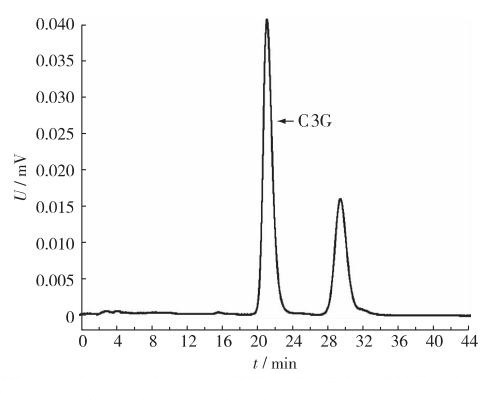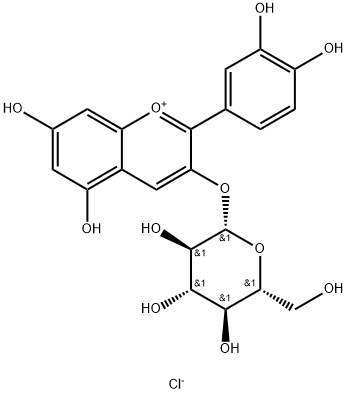| Plant Source | Anthocyanin also called anthocyanidin, is the main color substances in plant flowers and fruit. It is honored as the 7th essential nutrients of the human body after water, protein, fat, carbohydrates, Vitamins and minerals. Thus, it becomes the most perspective natural pigment. Mulberry anthocyanins has been approved by the Ministry of public health as a kind of food additive and widely used in food and health care products. Cyanidin-3-O-glucoside is one of the main ingredients of mulberry anthocyanins. Black soy bean is a traditional kind of crops in our country. It has a long food and medical history. Black soybean has been used for enriching the blood, activating the blood and Ufa beauty since the ancient times. Black bean peel, also called black clothes is the dry and mature skin of black soybean which is a kind of leguminous plants. It is rich in anthocyanins which mainly consist of delphinium and cyaniding. It has lots of healthgiving benefits such as antioxidant activity, Inhibiting mutagenesis, anti-inflammatory, prevention of cancer, anti-aging, etc. It has been a raw material of natural food additives and healthcare food.
Until now, only Korean scholar Lee reported 5 kinds of anthocyanins separated from black bean peel as the following: Cyanidin-3-O-glucoside,delphinidin-3-O-glucoside, petunidin-3-O-glucoside, malvidin-3-O-glucoside and Cyanidin. In addition, some research papers reported that Cyanidin-3-O-glucoside is an important ingredient of black bean peel.
Anthocyanin, as a kind of flavonoid plant chemicals, occurs ubiquitously in pants. Anthocyanins extracted from food or plants often contain different anthocyanins such as cyaniding, pelargonidin, petunidin, malvidin, etc. Glucoside can also be divided into single, double, three glucoside structures and anthocyanins with different structure have different biological activities.
Anthocyanin has many therapeutic effects such as antioxidant, Anti-atherosclerosis, adjusting blood fat, etc. cyanidin-3-O-β-glucoside is one of the main ingredients of Anthocyanin.
A new study claims that purple corn anthocyanin can inhibit the body weight growth of high-fat induced mice. But its effective components and the mechanism is not clear. It is speculated that the 7% content of Chrysanthemin in purple corn anthocyanins played a leading role. |
| Analysis method | The main Analysis method for Chrysanthemin is high performance liquid chromatography (HPLC). Chromatographic analysis condition is commonly as the following: chromatographic column: Phe nomenex Luna Su C18 (250mm×4.60mm,5μm); mobile phase: phase A is 0.5 % Phosphoric acid solution,phase B is water-acetonitrile (50: 50,V/ V). gradient elution:0min(18%B),23min(50%B),28min(18%B),33min(18%B),40min(stop);flow velocity:0.8mL/min;Detection wavelength:520nm;column temperature:30℃. Figure 1 shows the high performance liquid chromatogram (HPLC) figure of cyanidin-3-O-glucoside(Chrysanthemin) in mulberry extracting solution.
 |
| Pharmacological effects | Modern pharmacology study indicated that C3G has many significant medical and health care effects such as antioxidant, anti-tumor, protecting the nervous system, recovering Transient visual impairment, etc. In addition, studies indicated that Chrysanthemin can be used as protective agent for protecting cotton leaves against cotton bollworm.
C3G in Black bean peel can reduce the production of reactive oxygen species in 3T3-L1fat cells, thus, Dose dependently improved the resistance of H2O2 or TNF-α induced insulin. At the same time, it can reduce the expression of retinol-binding protein in type II diabetic rats, thus, improve hyperglycemia and insulin sensitivity and the symptoms of diabetes. |
| Antioxidant activity | Kuromanin chloride is phytochemical rich in plants and fruits and has remarkable anti-oxidant activity, resulting in it an ideal nutrient for nutritional intervention. The antioxidant activity of kuromanin chloride was evaluated by the DPPH and ABTS assay on GES-1 cells. The results showed that kuromanin chloride possessed obvious antioxidant effects, and also could decrease the ROS level in cells and had negligible effects on the viability of cells. Bulent groups analyzed the antioxidant activity of kuromanin chloride by ferric reducing antioxidant power, indicating that kuromanin chloride was the predominant antioxidant compared with anthocyanin in all blackberry fruits. In addition, by alleviating oxidative stress, strengthening the anti-oxidative system, and chelating with Cd ion, kuromanin chloride has the ability to against Cd-induced damage in various organs such as Cd-induced dysfunction of sex hormones, Cd-induced male reproductive toxicity and spermatogenesis disturbances, and Cd-induced kidney damage. |
| Antitumor effects | Kuromanin chloride have been proved that has antitumor effects. Treating PC-3 human prostate cancer cells with kuromanin chloride could induce apoptosis, activate caspase signaling pathway and loss of mitochondrial membrane potential, suggesting the prominent anticarcinogenic activity of kuromanin chloride. Kuromanin chloride also has been shown to inhibit the growth and metastatic potential of melanoma via estrogen receptor beta. These studies suggested that kuromanin chloride is a potential novel therapeutic and preventive approach for tumor. |
| Cytoprotective effects | Kuromanin chloride also exhibited cytoprotective effects. For example, experiments showed that kuromanin chloride could against the glucotoxicity‑induced apoptosis of pancreatic β‑cells, indicating the antidiabetic effects of kuromanin chloride. Moreover, kuromanin chloride also has other potential therapeutic effects, such as rheumatoid arthritis, the cognitive function in older adults with subjective memory impairment, neuroprotective effects, UVA-induced human dermal fibroblast injury by upregulating autophagy, and so on. All these suggested that kuromanin chloride is the potential therapeutic medicine for multiple diseases. |
| Storage | It is reported that long time high temperature and light has an obvious destructive effect on Mulberry Anthocyanins. At room temperature, the degradation rate of mulberry Chrysanthemin increased significantly with the extension of storage time. In long-term exposure to air, the light might induce the degradation of Chrysanthemin. The specific reasons need to be further studied. Therefore, anthocyanin extraction should be carried out in time after picking mulberry fruit. In addition fresh mulberry fruit should be stored in a cool, well-ventilated warehouse. |
| Chemical Properties | Purple powder |
| Uses | Cyanidol 3-Glucoside is a anthocyanin that is naturally occurring in various fruits, vegetable and plants. Cyanidol 3-Glucoside is known to exhibit high antioxidant capacity and neuroprotective effects by triggering mobilization of cellular free sialic acid and utilizing it as an additional biological antioxidant in brain neural cells. |
| Uses | Cyanidol 3-Glucoside is a anthocyanin that is naturally occurring in various fruits, vegetable and plants. Cyanidol 3-Glucoside is known to exhibit high antioxidant capacity and neuroprotective effect s by triggering mobilization of cellular free sialic acid and utilizing it as an additional biological antioxidant in brain neural cells. |
| General Description | This substance is a primary reference substance with assigned absolute purity (considering chromatographic purity, water, residual solvents, inorganic impurities). The exact value can be found on the certificate. Produced by PhytoLab GmbH & Co. KG |
| Biochem/physiol Actions | Anthocyanin. Antioxidant. Studied for its neuroprotective property. |

